The Article
Questyle CMA600i headphone amplifier and DAC: Adopting a Mode
18th April 2017
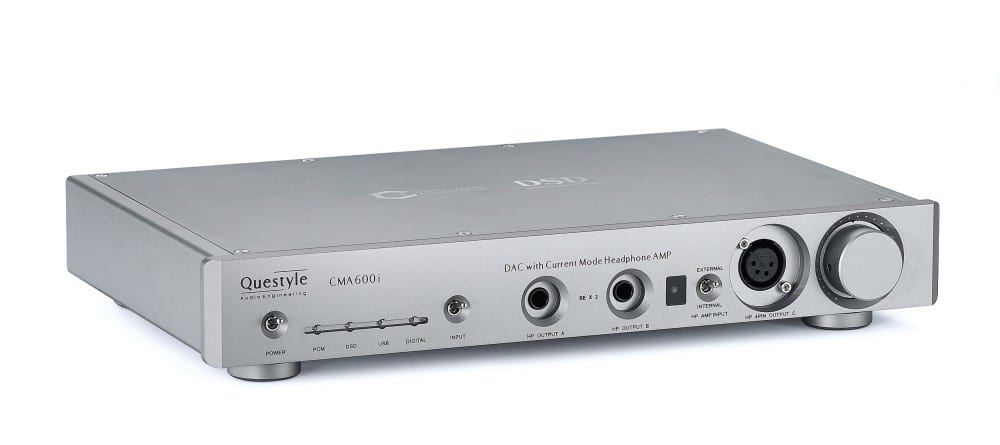
Promoting a Current Mode Amplification design, Paul Rigby reviews Questyle’s new headphone amp/DAC
Standing as the company’s entry-level design, the CMA600i is based upon Current Mode Amplification. It’s the very heart of the system. What is it? Good question. Big question, actually and one that could easily take up all of the room of this review. So I will paraphrase. Questyle, for example, point to Transient Intermodulation Distortion (TIMD) which, says that company, many amplifiers pass with excellent test specifications until they are used ‘in real life’ where the TIMD flies off the handle as the amplifier gradually loses control, adding a harsh edge to the sound. Some companies, “…have been aware of this problem,” said Questyle, “and have adopted the approach of little negative feedback or non-negative feedback to avoid TIMD. However, that either doesn’t solve the problem or is extremely costly. Successfully producing a non-negative feedback amplifier requires a very strict selection of components, with only a 1% or even 0.1% chance of successful matching. Meanwhile, there is the stability issue, which comes along, when amplifiers operate in a non-negative feedback state.”
Questyle also points at bandwidth which, for may amplifiers appears to be fine until high frequencies or high amplitudes cause issues. Questyle also says that, under real world condition, THD+N (Total Harmonic Distortion) can also be an issue via standard amps, “Working under a real driving load, traditional amplifiers at full band, especially at high frequency, can rarely make a THD+N below 0.001%, which then becomes the choke point, of the electronics part, of an audio system.”
As the company state, “High performance doesn’t necessarily equal high quality sound, it is only the foundation upon which good sound is built.” Current Mode Amplification, it says, sorts all of this out. We’ll see it it works as the company claims.
So that’s the heart of the system. This unit also features a USB port with a 3X Clock structure to sync (“properly”) with the 32bit AK4490 DAC chipset from AKM that includes a switch capacitor filter “OSR Doubler” to reduce noise.
The CMA600i accepts the DSD bit-stream directly from your computer. That’s true DSD with no PCM involved. As such, the CMA600i can handle files up to DSD256 and PCM to 32bit/384kHz over USB.
The front sees a 4-pin fully balanced output and dual 6.35mm standard headphone jacks. When the 4-pin full balanced output is working to drive a headphone, there are four groups of pure Class A and Current Mode amplification circuits output double voltage, bringing quadruple power, so it can easily drive any high impedance headphones.
The silver/space grey coloured unit also offers an independent pre-amp module.
The whole thing sits within a Foxconn chassis which spans 330mm x 300 x 55mm and weighs 3.2kg.
SOUND QUALITY
I began the test with the unit hooked up to my reference chain and played a vinyl version of Gary Numan’s Me! I Disconnect From You from Tubeway Army’s Replicas LP. I started with my Sennheiser HD 800 headphones and was immediately impressed by the extended reverb tails on the introductory synth sequence, the space and air within the soundstage allowed the sound to linger and float for a relatively long time
In bass terms, the lower frequencies were even handed in that there was also a relaxed and organic approach to the percussion. It also never swamped or masked the midrange. Within the mids, the synth runs were nicely textured and detailed while the busy arrangement was measured, layered and complex but no one area of the mix dominated. You could be picky here and complain that the bass guitar, for example, was lacking in a touch of grit, bounce and resonance but that would be to ignore the Questyle’s overall neutral and very democratic approach to music. In this way, each element of the music was allowed to compete on firmly equal terms.
Onto a slice of vocal jazz and Earl Coleman’s Love Songs featuring Billy Taylor’s band, the 1968 Atlantic pressing and the track, People. Coleman had the Billy Ekstine bass-type delivery that, in the majority of cases, is swamped by the echo chamber. In the hands of the Questyle, though, this often unruly echo chamber (and it wasn’t ‘reverb’ via a desk in those days, it really was an echo chamber) was disciplined and taken under control. Many head amps allow the echo to run away, swirl around the frequencies and almost swamp the upper mids. The Questyle allowed the echo to fall off the words of the delivery but kept the rest of the effect in check. This improved the vocals tremendously, giving the backing band’s instruments time and space for a slice of the musical pie instead of being bombarded by bloom.
This sense of organisation also applied to the band itself. The flute and the bass were both subject to wandering aimlessly over the soundstage but the Questyle added a welcome focus to both areas that gave the overall presentation greater impetus and pace instead of the plodding that can sometimes occur. All of this meant that more subtle elements in the mix were heard properly. The piano was one good example of this as was the emergence of a entirely new instrument, the jazz guitar! I confirmed that it was even part of this song by double checking on the rear of the sleeve, within the liner notes. The Questyle was able to produce enough clarity to make this important instrument visible to the ear for the first time.
I then moved to a digital source, my MacBook laptop plus SSD, connected via USB. I loaded up Sonny Rollins’ St. Thomas, played via Audirvana Plus at 24bit/96kHz and flipped the Questyle amp input from ‘external’ to ‘internal’.
Again, the neutral nature of the music was retained and the Rollins saxophone was both sharp and edgy where necessary but also organic in terms of how the sax was being played, Rollins was breathy in his quieter periods while the percussion was sharp and precise but tonally variable in terms of the differing drum types used during the mid song solo. The neutral demeanour of the Questyle was quite revealing in that you could hear the general underlying affect of changing from an analogue source to a digital source. In these terms, the Questyle was transparent and honest in how the information reached your ears.
I then moved to DSD 64 and Eric Bibb’s Meeting at the Building a gospel-esque blues piece feature harmonic vocals and organic instruments. Via DSD, the Questyle offered a rich and expansive soundstage with a new complexity over the 96kHz file that provided a new sense of maturity and involvement in the musical presentation. By that, I mean that there seemed to be added variety in the frequencies available to the ear, the soundstage sounded more elaborate but, again, even handed in its approach.
Moving up to DSD 128 for the same song basically stretched the boundaries of the song giving more room to manoeuvre for both the vocals and the instruments. That is where a crescendo previously felt like it had hit a glass ceiling. Via the 128 file, though, that same event soared into new and empty space, adding to the abundance and fullness of the music as a whole. The Questyle had no issues with this format and never felt as though it was straining or creaking. I wondered how it might sound at DSD 256.
I played, the Frank Bridge Variations: 4. Romance via Benjamin Britten at DSD 256 and was very impressed at the naturalistic manner of the orchestra. The amount of air and space available for all of the music on show hear meant that there never any sense of effort, strain or difficulty. Everything flowed easily, everything had time. There was never a hint of difficulty. Even string-based crescendos failed to bark or smear. The Questyle took the onslaught of information in its stride. The unit’s dynamic reach was impressive indeed. Without any un-natural stress or accent, the music was allowed to talk and talk without any sense of a false emphasis.
Finally, I added my Red Wine Audio-enhanced Astell & Kern AK120 via the optical port and played Bob Marley’s Jamming to be faced with a honed yet detailed underlying bass line but a remarkably open and focused vocal performance that was not without emotion while the backing band played within an organic and neutral soundstage, adding to the musicality and rhythmic enjoyment of the piece.
CONCLUSION
What impressed me most about the performance of the Questyle was that it tackled music at its own pace. It just refused to be rushed and be hassled into tripping over. It was balanced and impartial and addressed each piece of music without any enhancement and without any prejudice. Because of that, new aspects of the music suddenly popped out to be noticed by the ear because no other element was dominating or masking meaning that, in the end, more music could be heard and experienced. A remarkable headphone amp/DAC and one of the most self-confident bits of kit its been my pleasure to experience. It could also be the most neutral piece of hifi technology I’ve ever listened to. It is, in fact, the Switzerland of audiophile technology.
QUESTYLE CMA600i HEADPHONE AMPLIFIER AND DAC
Price: £1,199
Website: www.scvdistribution.co.uk
Tel: 03301 222500
GOOD: neutral presentation, spacious soundstage, price, transparency, clarity
BAD: nothing
RATING: 9
REFERENCE SYSTEM USED
Origin Live Sovereign turntable
Origin Live Enterprise 12” arm
Transfiguration Proteus cartridge
Leema Essentials CD player
Astell & Kern AK120 (Red Wind modified)
Icon Audio PS3 phonostage
Aesthetix Calypso pre-amp
Vertex AQ/Tellurium Q cabling
Harmonic Resolution Systems Noise Reduction Components
All vinyl was cleaned using an Audio Desk’s Ultrasonic Pro Vinyl Cleaner

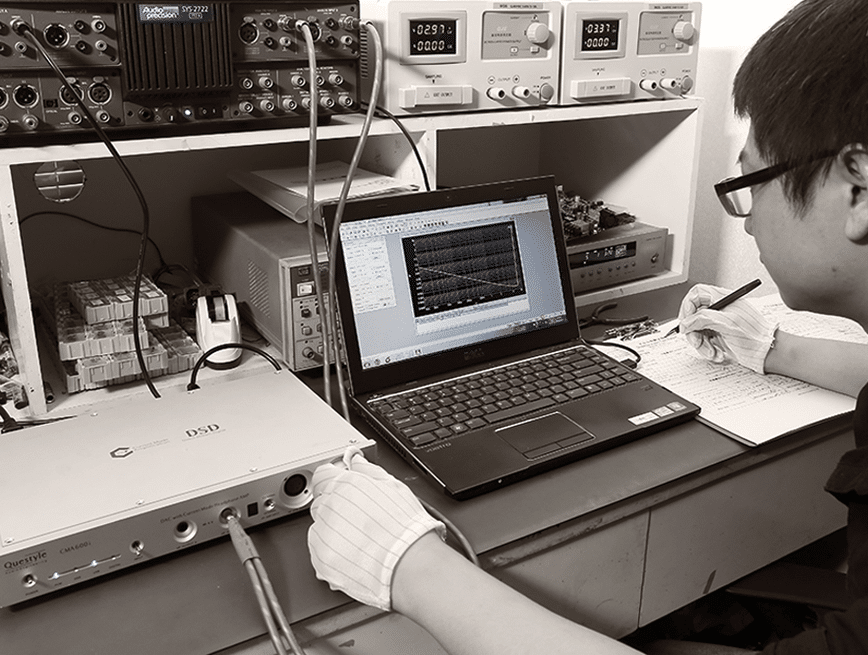
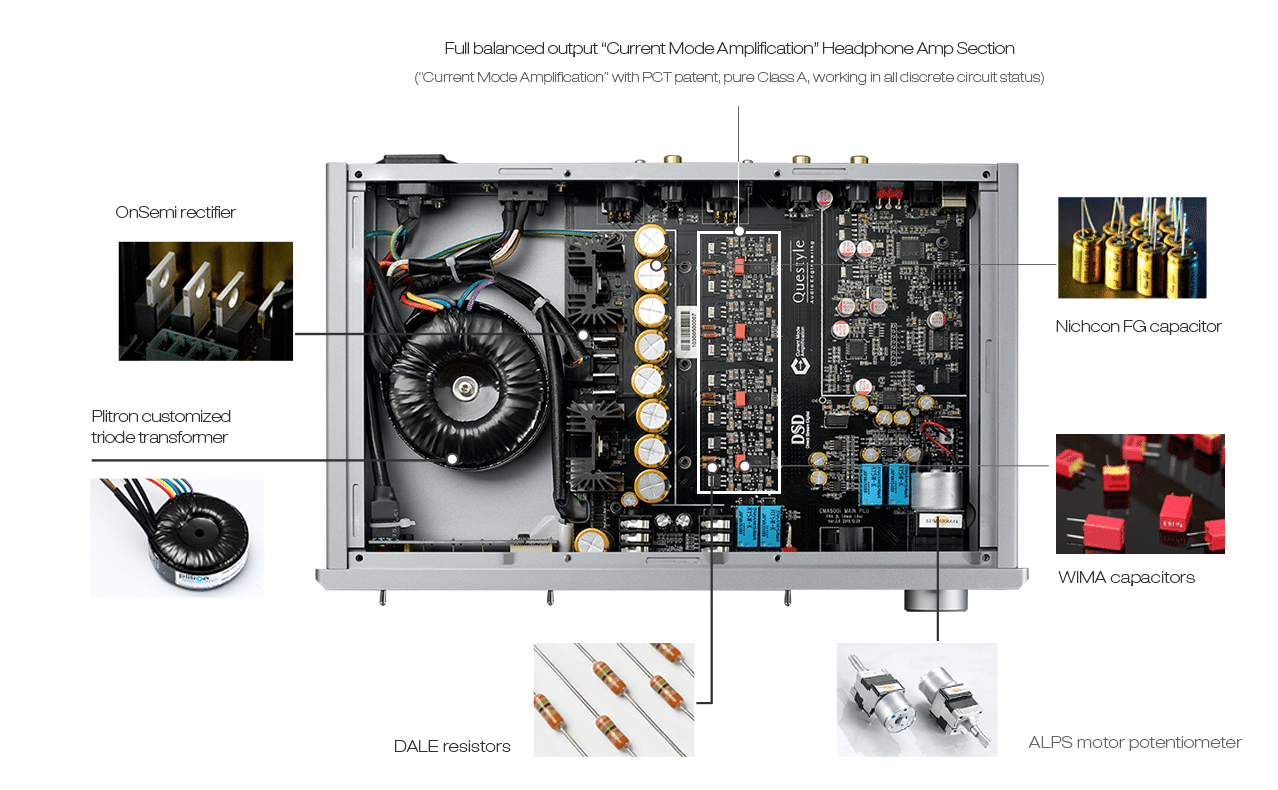
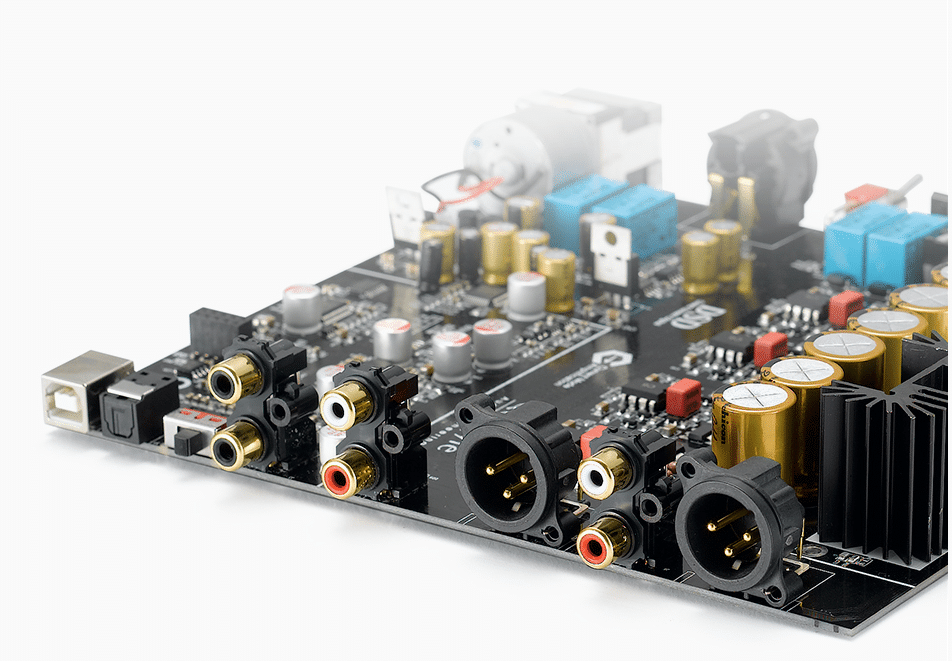

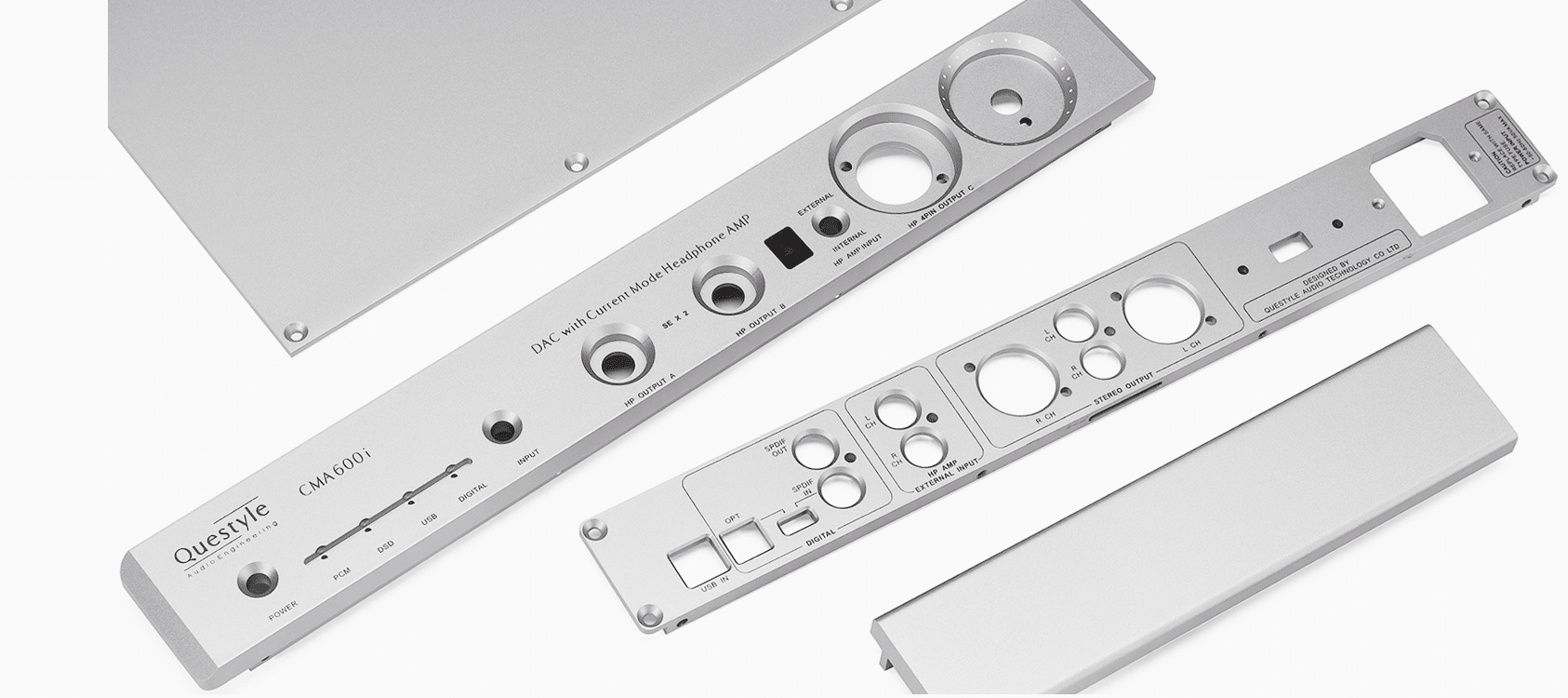
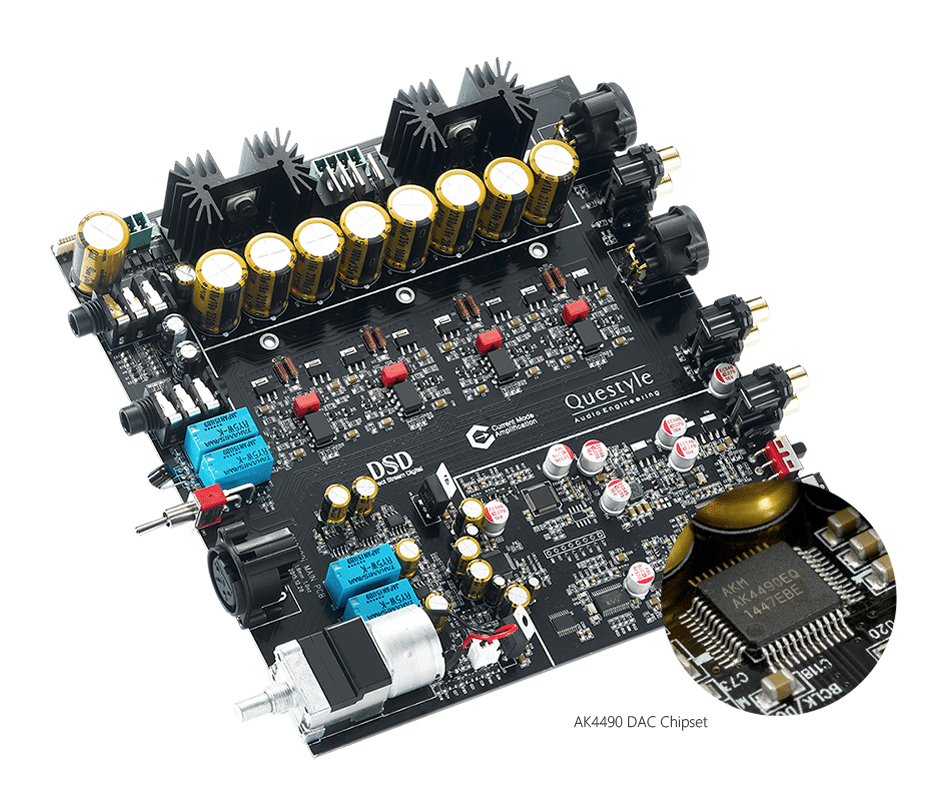


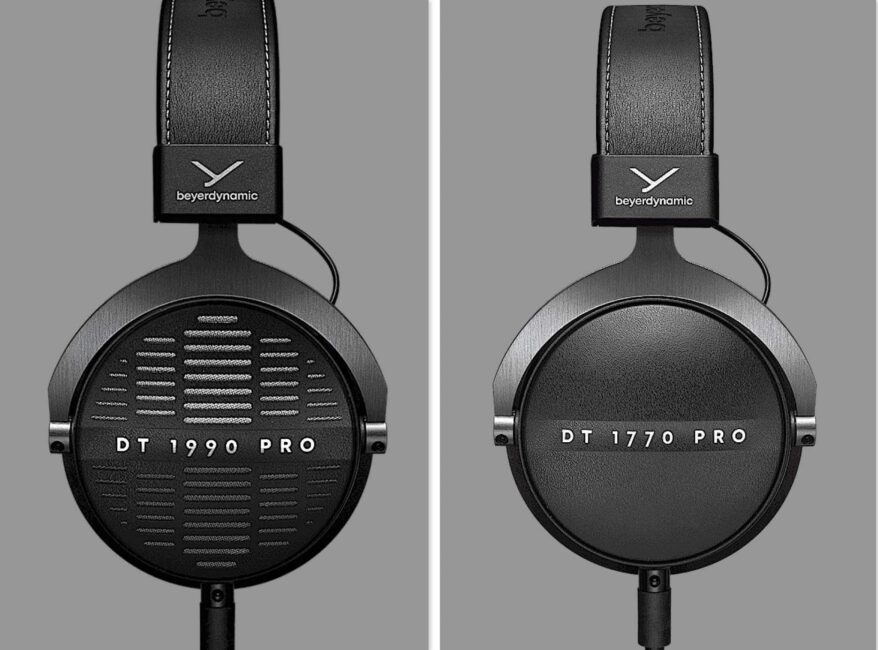

I was wondering if you also have experienced the “clicking” noise on this unit while feeding it from USB source? there were a couple of reports in headfi about this. It looks like Questyle has acknowledge the issue and there is a fix but you need to return the unit for servicing.
Hi James – interesting and thanks for the heads-up on this one but no, I didn’t get that at all. Maybe my unit had been tweaked before I received it?
Picked up a unit in December 2016 and I can confirm the clicking when I changed tracks. It stops when I feed it from an external DAC, even though I understand that input is converted back to digital by an ADC before arriving at the internal DAC, where it’s summed into a balanced signal.
Personally, I hate the DAC section of the CMA600I. Switching that out for the signal from a Chord 2Qute though, the sound is simply magic. Can’t fault the headphone amp section for anything except the fact that it doesn’t have a ton of juice.
Interesting stuff, thanks for that Jez.
I went ahead and bought me a CMA600i and received it yesterday. It definitely sounds great with the HD800 S. While I was setting up through USB, I had trouble setting the sample rate and bit depth to 32 bit, 384kHz. The most I can set it to is 24 bit, 192kHz. Here is some info on the driver:
Manufacturer: XMOS
Product: xCORE USB Audio 2.0
VID/PID: 0x20B1/0x307C
Revision: v6.F3
Driver Info:
Version: 3.30.0
Date: 1/8/2016
Do you know what is causing this and/or how to fix it?
Have actually played specific 32bit/384kHz files through it?